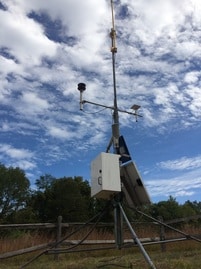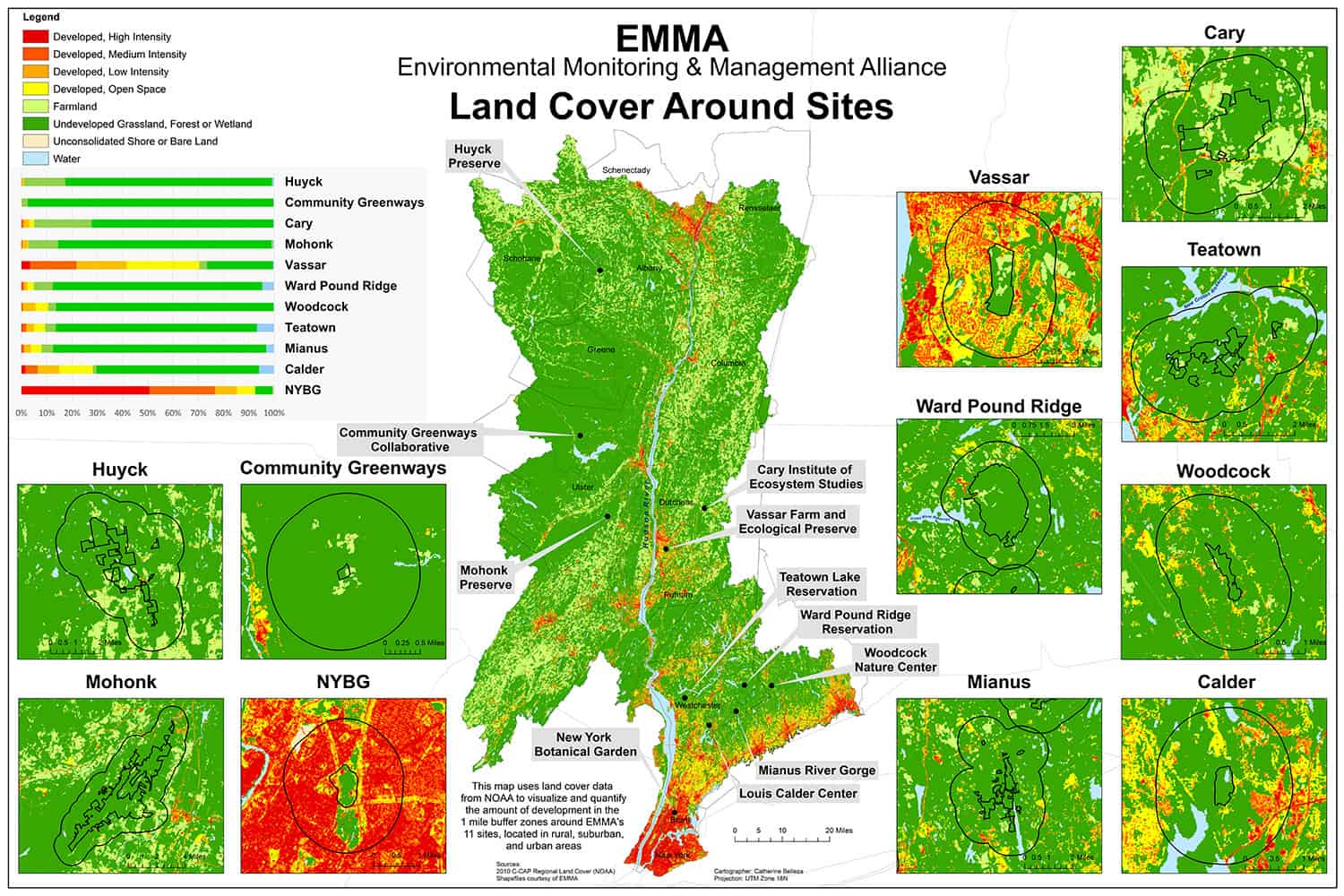Projects
Current Projects
EMMA has developed monitoring projects that are focused on imperative environmental issues in the region, and that have the potential to inform management decisions for EMMA members and other resource managers.
These projects have generated considerable interest among local researchers and conservation organizations, several of which have approached us about participating. We anticipate this interest to increase as our projects grow.
In addition to the core EMMA monitoring projects, EMMA members conduct a number of monitoring, management and educational activities specific to their sites and constituents.

Deer Exclosures
EMMA is examining the effects of deer on forest regeneration in upland oak forests on a regional basis at eight member sites, four of which were set up via EMMA resources in 2013. These data, coupled with deer management programs, will allow us to both assess the impact deer are having on the survival of native species and evaluate the effectiveness of various deer management strategies across the region.

Phenology Observations
Nine EMMA sites have established phenology trails as part of the New York Phenology Project (NYPP), a joint monitoring, citizen science and public education project launched by the Community Greenways Collaborative. Eight of the sites were set up through EMMA in 2014.
These trails follow seasonality in plant species and the effects of climate change on the timing of this seasonality. Changes in events like flowering can lead to mismatches between dependent animal species and have significant impacts on population growth and declines. EMMA recently committed to the implementation of additional focal projects to inform specific management priorities such as invasive species and pollinator habitat.

Weather Stations
Encompassing much of our latitudinal gradient, EMMA’s series of weather stations acts as a unique system for monitoring climate across a landscape. The data gathered in EMMA’s weather initiatives will be made available to researchers studying large‐scale and long-term changes in the environment, as well as those studying weather in conjunction with other conservation issues, such as phenological events.
Our current network of weather stations collects data on precipitation, wind speed, and daily temperature at seven of the ten EMMA sites. We are in the process of installing updated equipment at three of our sites.

Habitat Fragmentation
A method to calculate an index of habitat fragmentation at and around the different EMMA sites will allow for assessment of various impacts of habitat fragmentation. Land use and habitat fragmentation will be measured regularly using raw geographical data such as the United States Geological Survey National Land Cover Dataset (USGS NLCD) and a habitat fragmentation indexing tool from University of Connecticut (UCONN). There is some difficulty using the NLCD to compare changes over time as the level of detail provided in the data changes over time. However, estimating a habitat fragmentation index for the EMMA sites for the same years will provide data that could be used to assess various responses to habitat fragmentation including responses within our priority issues.

